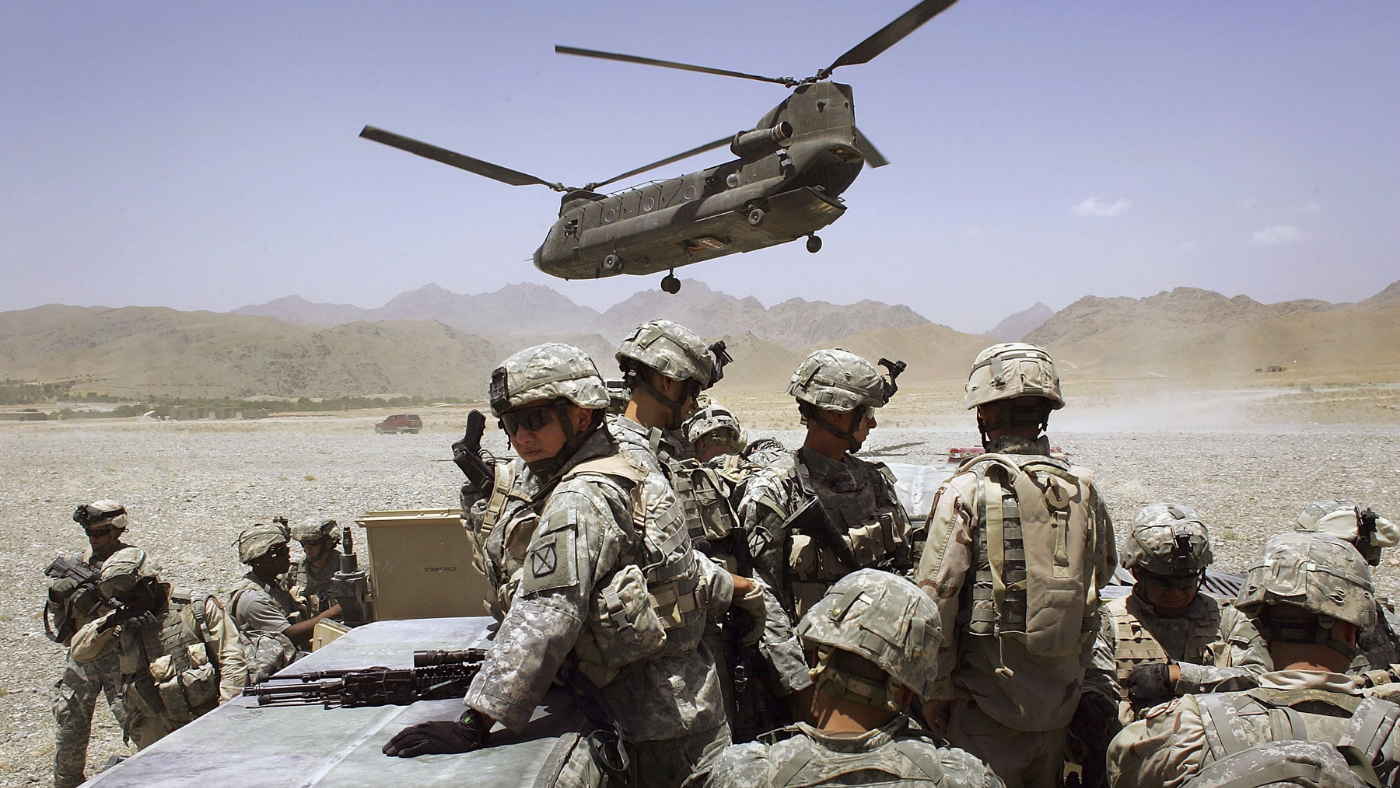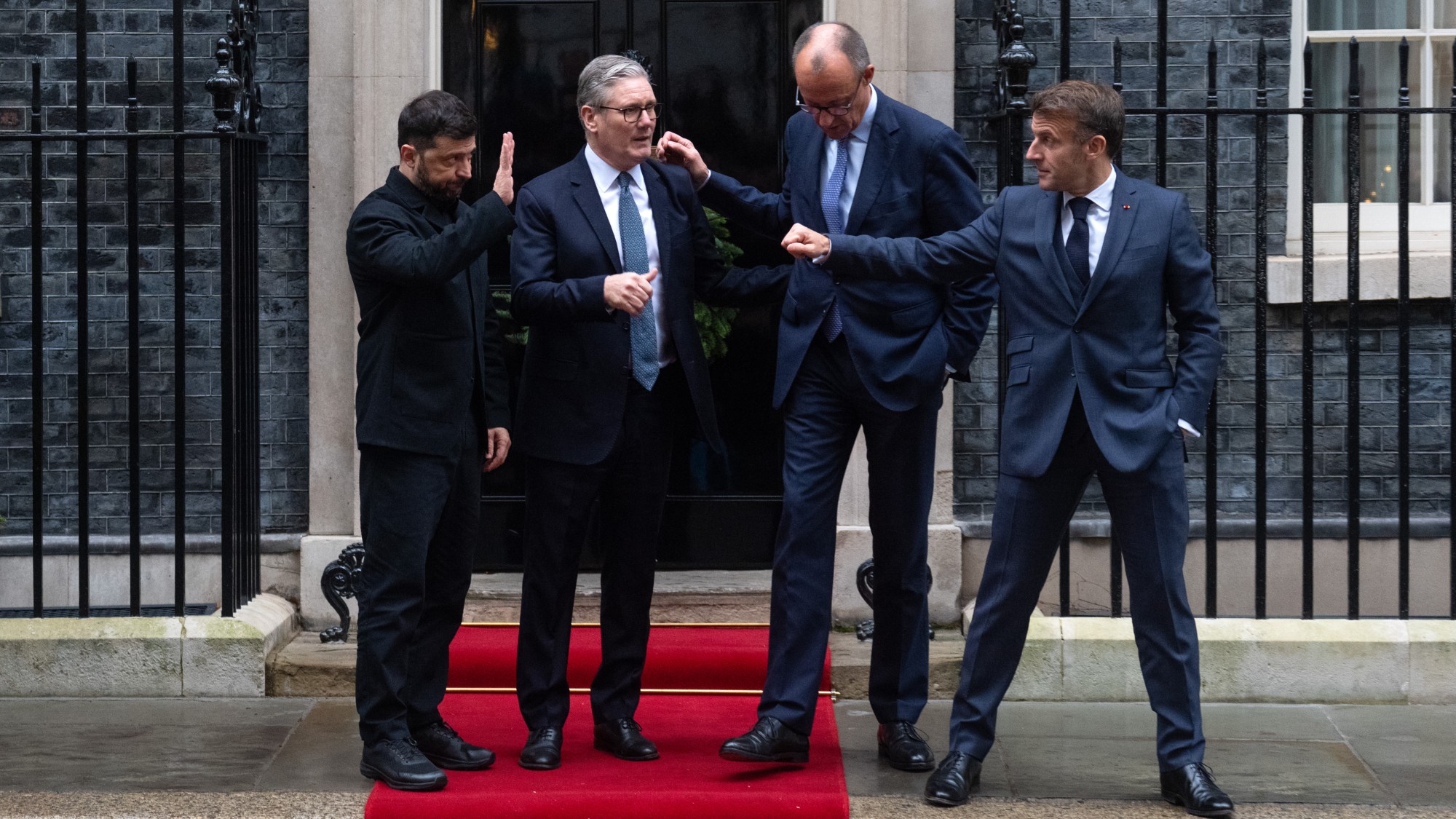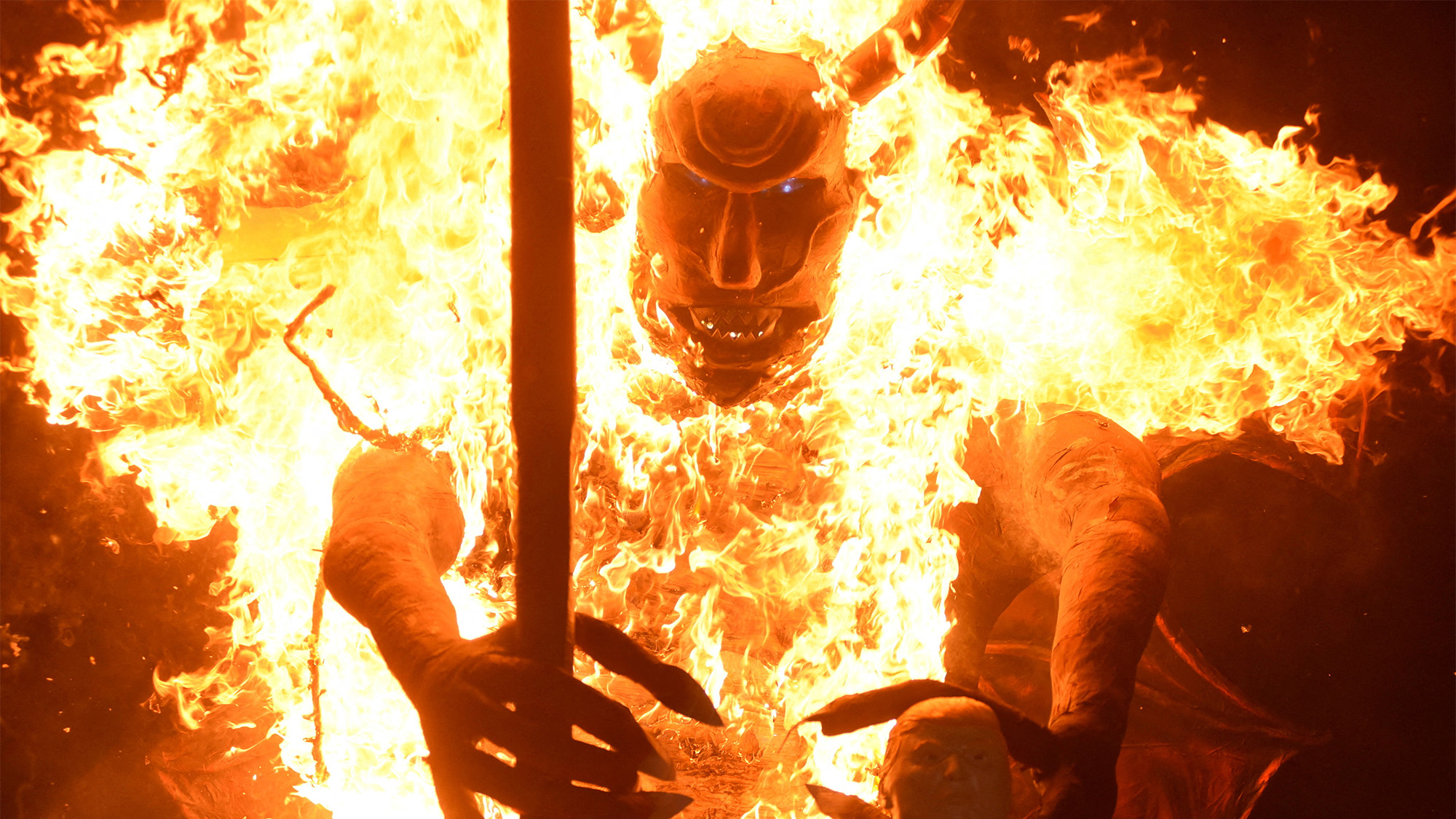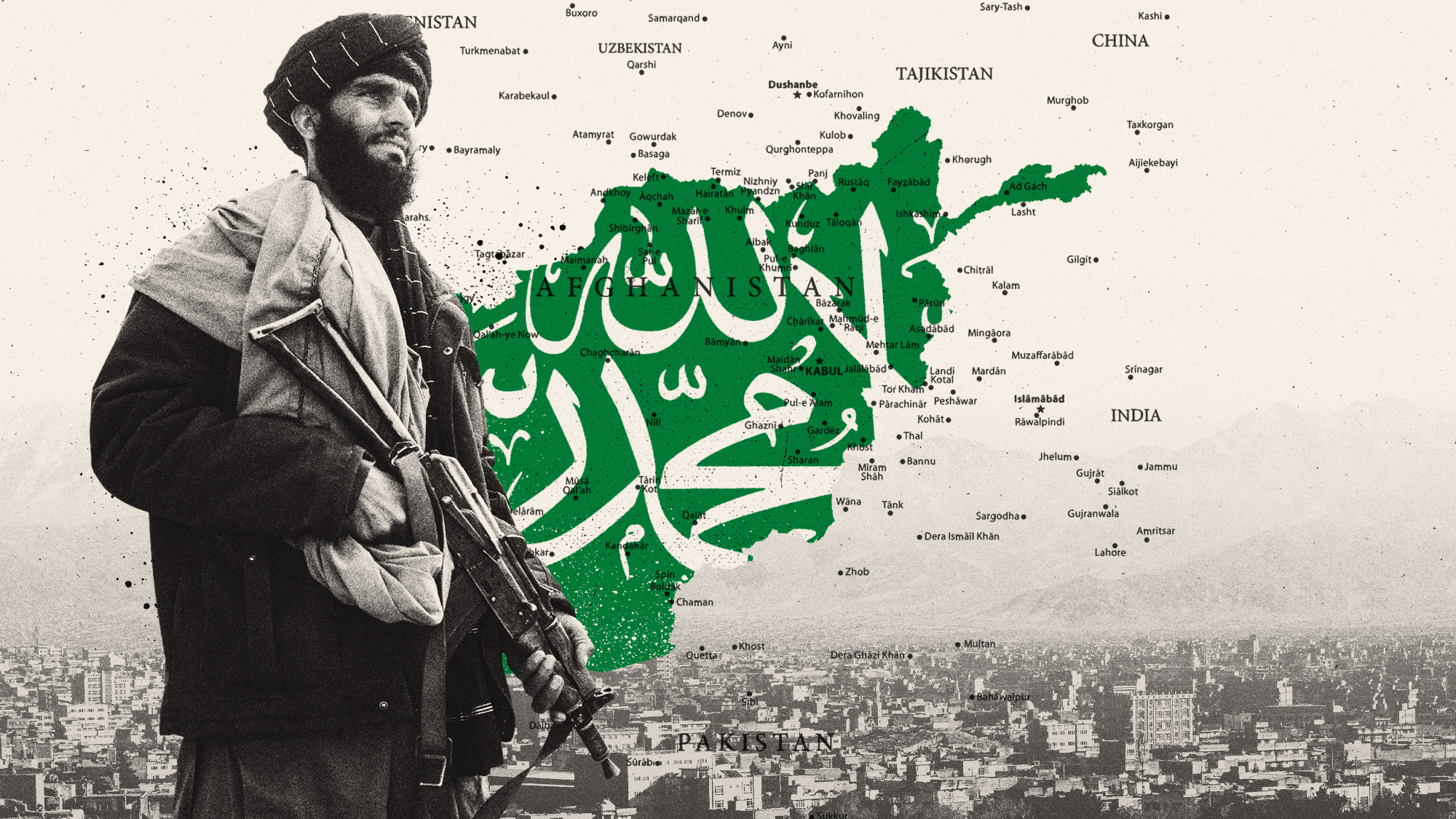How did the Afghanistan War start?
Invasion by Western forces followed many years of internal conflict

In 2001, America and its allies launched a “new and different war” on terrorism under the leadership of then president George W. Bush.
The military offensive began in the immediate aftermath of the 9/11 attacks and would last for 20 years. America’s “enemy” was a “radical network of terrorists” that existed globally, as well as “every government that supports them”, Bush told Congress.
Yet two decades and a further three US presidents later, the “failure” of the war on terror “is undeniable”, said France24. The US-led invasion of the Middle Eastern country “toppled the Taliban and degraded the capabilities of al-Qaeda”, but according to experts “did nothing to eradicate the causes of violent Islamic extremism at its roots”, the news site added.
The Week
Escape your echo chamber. Get the facts behind the news, plus analysis from multiple perspectives.

Sign up for The Week's Free Newsletters
From our morning news briefing to a weekly Good News Newsletter, get the best of The Week delivered directly to your inbox.
From our morning news briefing to a weekly Good News Newsletter, get the best of The Week delivered directly to your inbox.
Now, those tangled roots have been laid bare following the Taliban’s seizure of Afghanistan last month, and the ensuing chaos of the US evacuation.
Internal conflict
The Afghan people had endured decades of political turmoil and conflict prior to the US invasion.
In the 1950s, the Soviet Union had become a key trading partner of Afghanistan, then under the leadership of prime minister Daoud Khan, who was keen to strengthen ties with the neighbouring nation.
A free daily email with the biggest news stories of the day – and the best features from TheWeek.com
However, in 1963, Afghan king Zahir Shah forced Daoud to resign and subsequently introduced a constitution that converted the country into a modern constitutional monarchy. The move fuelled political polarisation, and major instability ensued - so much so that the country was led by five different PMs between 1965 and 1972.
In 1973, Daoud led a bloodless coup to overthrow Shah and declared Afghanistan a republic, with himself as the country’s first president.
But while Daoud had previously had good relations with the Soviet Union, these links grew increasingly strained as he pursued a campaign against Afghan communists. Five years after announcing his presidency, Daoud was killed in a Soviet-backed coup that many Afghans see “as one of their country’s darkest days”, Reuters reported.
“A decade of Soviet occupation, civil war, and the rise of the Taliban” were to follow, the news agency continued.
In 1989, then USSR leader Mikhail Gorbachev withdrew Soviet troops from Afghanistan, leaving behind a “puppet” communist government “that could not survive for long”, said the Kashmir Reader newspaper.
The Mujahidin, a group of Islamic guerillas, began taking control of regions across the country in the ensuing civil conflict, before seizing power in 1992. But the “victors were far from united” and power struggles erupted, added the New Internationalist. By the end of the year, the country’s capital was “devastated thanks to the actions of competing warlords”, the UK-based left-wing magazine continued.
Further groups of Islamic extremists formed, including the Taliban. In 1994, the Taliban took Afghanistan’s second-largest city, Kandahar, where they met with “little resistance from the war-weary population”.
Al-Qaeda’s then leader, Osama bin Laden, expressed support for the group, who in turn provided protection when he returned to Afghanistan from Saudi Arabia in 1996 - the year that the Taliban captured Kabul and established the Islamic Emirate of Afghanistan.
A strict interpretation of the Quran was enforced during the Taliban’s reign, which lasted until 2001. Dissent from the group’s reading of sharia law was met “with brutal public punishments, including floggings, amputations and mass executions”, The New York Times reported. And women and girls faced strict curtailments of their rights to education and employment.
September 2001
The assassination of Afghan military commander Ahmad Shah Massoud in 2001 was “the curtain raiser for the attacks on New York City and Washington D.C. that followed”, US national security expert Peter Bergen wrote in an article published in Time magazine five years later.
Known as “The Lion of Panjshir”, Massoud led resistance movements in Afghanistan against first the Soviets in the 1980s and then the Taliban in the 1990s.
On 9 September 2001, he was fatally wounded by a bomb concealed within a camera belonging to two extremists disguised as journalists. The assassins were later found to be al-Qaeda operatives believed to have been acting on orders from bin Laden.
Massoud was “the principal antagonist of the Taliban”, Bergen continued. “By engineering his death, bin Laden gave the Taliban something they desperately wanted, and ensured that the Taliban would protect al-Qaeda in Afghanistan after 9/11.”
Two days after the assassination, 19 al-Qaeda hijackers took control of four passenger planes on course to destinations on the west coast of America. The coordinated terror attacks would claim the lives of 2,977 people.
In the following hours, President Bush warned that America would “make no distinction between the terrorists who committed these acts and those who harbour them”.
US officials soon identified bin Laden as the orchestrator of 9/11 and demanded that the Taliban hand over al-Qaeda operatives in Afghanistan.
The Taliban refused, however. With support from the UK, and the promise of future support from other nations including France and Germany, the US began airstrikes on al-Qaeda and Taliban forces the following month.
The fallout
“If President George W. Bush had left it there, the so-called war on terror might have been seen as a remarkable success,” the BBC’s world affairs editor John Simpson told Radio 4’s Today programme this week.
By November 2001, the Taliban’s control had begun to crumble. In December, Afghan political factions were invited to Bonn in Germany, where they signed an agreement that installed Hamid Karzai as chair of Afghanistan’s interim administration (he would become the country’s first democratically elected leader, in 2004). The International Security Assistance Force (ISAF) was also created, to support the government.
Days later, the Taliban fled the city of Kandahar. “A sense of calm had returned” to the city, pierced only by “firing guns to celebrate the tribal victory”, CNN reported at the time.
Bush, however, did not leave it there. His advisors “wanted to show that the US was strong as ever, and decided to prove it by overthrowing Saddam Hussain in Iraq, who’d had nothing [whatsoever] to do with 9/11,” Simpson told Today.
Washington’s focus shifted from Afghanistan to Iraq and in 2003, the US declared an end to “major combat” in Afghanistan. Reconstruction efforts began, with help from ally nations including Canada, Germany and Italy.
Progress was slow, and internal conflict continued in the following years, with regular clashes between the Taliban and British troops in Helmand province.
But not until 2009, during Barack Obama’s first presidential term, did Washington’s focus shift back to Afghanistan, “where many Americans thought it should have always been”, Reuters said at the time.
-
 Will there be peace before Christmas in Ukraine?
Will there be peace before Christmas in Ukraine?Today's Big Question Discussions over the weekend could see a unified set of proposals from EU, UK and US to present to Moscow
-
 Quiz of The Week: 6 – 12 December
Quiz of The Week: 6 – 12 DecemberQuiz Have you been paying attention to The Week’s news?
-
 The week’s best photos
The week’s best photosIn Pictures A man's best friend, the elephants in the room, and more
-
 Normalising relations with the Taliban in Afghanistan
Normalising relations with the Taliban in AfghanistanThe Explainer The regime is coming in from the diplomatic cold, as countries lose hope of armed opposition and seek cooperation on counterterrorism, counter-narcotics and deportation of immigrants
-
 Femicide: Italy’s newest crime
Femicide: Italy’s newest crimeThe Explainer Landmark law to criminalise murder of a woman as an ‘act of hatred’ or ‘subjugation’ but critics say Italy is still deeply patriarchal
-
 Brazil’s Bolsonaro behind bars after appeals run out
Brazil’s Bolsonaro behind bars after appeals run outSpeed Read He will serve 27 years in prison
-
 Americans traveling abroad face renewed criticism in the Trump era
Americans traveling abroad face renewed criticism in the Trump eraThe Explainer Some of Trump’s behavior has Americans being questioned
-
 Nigeria confused by Trump invasion threat
Nigeria confused by Trump invasion threatSpeed Read Trump has claimed the country is persecuting Christians
-
 Sanae Takaichi: Japan’s Iron Lady set to be the country’s first woman prime minister
Sanae Takaichi: Japan’s Iron Lady set to be the country’s first woman prime ministerIn the Spotlight Takaichi is a member of Japan’s conservative, nationalist Liberal Democratic Party
-
 Russia is ‘helping China’ prepare for an invasion of Taiwan
Russia is ‘helping China’ prepare for an invasion of TaiwanIn the Spotlight Russia is reportedly allowing China access to military training
-
 Interpol arrests hundreds in Africa-wide sextortion crackdown
Interpol arrests hundreds in Africa-wide sextortion crackdownIN THE SPOTLIGHT A series of stings disrupts major cybercrime operations as law enforcement estimates millions in losses from schemes designed to prey on lonely users